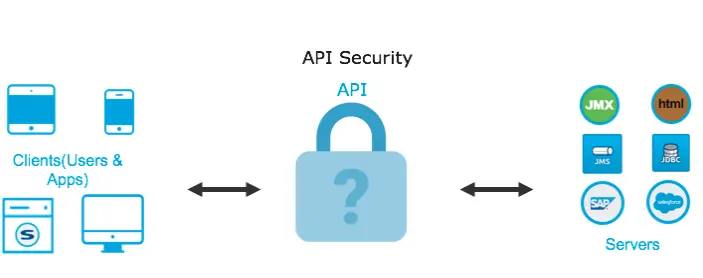Enhancing API Security with Cloudflare

Executive Summary

Securing APIs is a critical concern for modern organizations. Cloudflare offers a comprehensive suite of solutions to enhance API security, including robust authentication and access control mechanisms, advanced threat detection and mitigation, and real-time visibility and analytics. By leveraging Cloudflare’s API security capabilities, organizations can safeguard their APIs from unauthorized access, malicious attacks, and data breaches, ensuring the integrity and reliability of their digital services.
Introduction
APIs, or application programming interfaces, are essential components of modern software development, enabling seamless communication and data exchange between applications and services. However, APIs also present a significant security risk, as they can serve as entry points for unauthorized access, malicious attacks, and data breaches. To mitigate these risks, organizations must implement robust API security measures. Cloudflare provides a comprehensive set of tools and services to help organizations protect their APIs from a wide range of threats.
FAQs
Q: Why is API security important?
A: APIs provide a direct path to an organization’s data and applications. Without proper security measures, APIs can be exploited by attackers to gain unauthorized access, steal sensitive data, or disrupt critical business processes.
Q: What are the biggest API security threats?
A: Some of the most common API security threats include:
- Unauthorized access and data breaches
- Distributed Denial-of-Service (DDoS) attacks
- Injections (e.g., SQL injection, command injection)
- Cross-site scripting (XSS) attacks
- Man-in-the-middle (MitM) attacks
Q: How can Cloudflare help enhance API security?
A: Cloudflare’s API security solution offers a comprehensive set of features, including:
- Authentication and Access Control: Multi-factor authentication, IP whitelisting, and rate limiting to prevent unauthorized access.
- Threat Detection and Mitigation: Advanced threat detection algorithms and machine learning models to identify and block malicious activity.
- Visibility and Analytics: Real-time visibility into API traffic patterns and anomalies, enabling organizations to detect and respond to security incidents promptly.
Understanding Cloudflare’s API Security Capabilities
Cloudflare offers a range of key subtopics to enhance API security.
Authentication and Access Control
Authentication and Access Control measures ensure that only authorized users and applications can access your APIs. Cloudflare provides several methods for authentication, including:
- OAuth 2.0 and OpenID Connect: Industry-standard protocols for secure authentication and authorization.
- API Keys: Long, complex, and rotated frequently to prevent unauthorized access.
- IP Whitelisting: Restricting access to specific IP addresses or ranges.
- Rate Limiting: Limiting the number of API calls per user or application to prevent abuse.
Threat Detection and Mitigation
Threat Detection and Mitigation techniques protect your APIs from malicious attacks and data breaches. Cloudflare employs a variety of measures, such as:
- Web Application Firewall (WAF): Detects and blocks malicious HTTP traffic, including SQL injection, XSS, and DDoS attacks.
- DDoS Protection: Mitigates volumetric DDoS attacks by filtering and absorbing malicious traffic.
- Rate Limiting: Throttling requests to prevent brute-force attacks and other malicious activity.
- Machine Learning Algorithms: Advanced algorithms to identify and block zero-day attacks and other advanced threats.
Real-Time Visibility and Analytics
Real-Time Visibility and Analytics provide essential insights into API traffic patterns and security events. Cloudflare offers features like:
- API Traffic Analytics: Real-time dashboards and reports to monitor API usage, performance, and security metrics.
- API Security Events: Detailed logs of security events, including blocked attacks and unauthorized access attempts.
- Threat Intelligence: Access to Cloudflare’s global threat intelligence database to identify emerging threats and mitigate risks proactively.
- Customizable Alerts: Configure alerts to notify you of specific security events or anomalies.
Bot Management
Bot Management protects your APIs from malicious bots and scrapers. Cloudflare’s solution includes:
- Bot Detection and Blocking: Advanced algorithms to identify and block malicious bots and scrapers.
- Challenge Mechanisms: Captchas and other challenges to prevent automated attacks.
- Rate Limiting: Limit the number of API calls per user or application to prevent bot abuse.
- IP Reputation: Access to Cloudflare’s global IP reputation database to identify and block known bot sources.
API Gateway and Management
API Gateway and Management provides a central platform to manage and secure your APIs. Cloudflare offers:
- API Gateway: A unified gateway to manage all API traffic and security policies.
- API Versioning: Support for multiple API versions and smooth transitions between versions.
- Documentation and Discovery: Easy-to-use documentation and discoverability tools for developers.
- Developer Portal: A centralized portal for developers to access API documentation, tutorials, and support resources.
Conclusion
Cloudflare’s API security solutions offer a comprehensive approach to protect your APIs from a wide range of threats. By implementing these measures, organizations can strengthen their security posture, ensure the integrity and reliability of their APIs, and maintain the trust of their customers and partners.
Keyword Tags
- API Security
- Cloudflare
- Authentication and Access Control
- Threat Detection and Mitigation
- Visibility and Analytics
